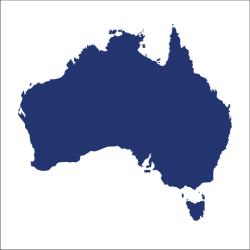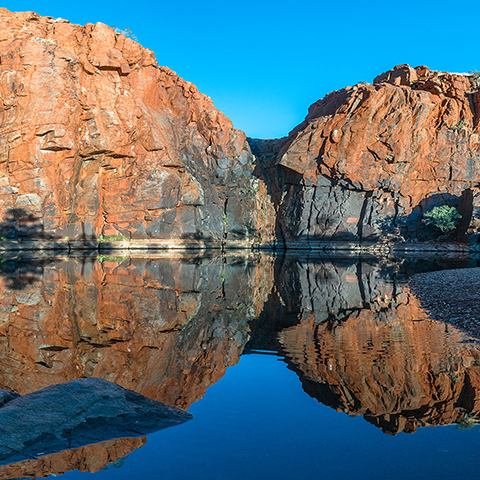
This project was funded by the Australian Government ($1.7 million). Australian Government funding was provided through the National Water Grid Fund.

Python Pool in the Pilbara Region of Western Australia. The Pilbara Region was part of a case study for the hydrogen project by CSIRO.
Project overview
The hydrogen industry is rapidly expanding. Like other resource development activities, there are potential environmental impacts. Growth of the industry will need water. Understanding water resources and wastewater management needs will support sustainable growth.
This project developed a rapid, consistent approach to understand water requirements. It focussed on 3 regions to develop a national method as:
- hydrogen production is projected in these regions.
- they have different physical characteristics and geography that could influence resources.
These regions were:
- the North Bowen Basin (Queensland)
- Pilbara (Western Australia)
- Upper Spencer Gulf (South Australia).
Relevant stakeholders helped to develop the method. Stakeholders from all jurisdictions took part to enhance the method’s relevance and applicability.
The project investigated:
- water availability
- potential impacts of hydrogen development on environmental, cultural, urban and industrial water users.
Goals of the assessment
CSIRO developed the method. It assessed water resource needs for:
- green hydrogen – uses renewable energy for the electrolysis of water to generate hydrogen
- blue hydrogen – uses natural gas as feedstock to produce both hydrogen and CO2. This type of hydrogen also captures and permanently stores produced CO₂, helping to achieve net zero emissions.
Water resource assessments helped determine changes to water needs availability over time. This included:
- a review of operating hydrogen facilities
- comparison of future scenarios (2030, 2035, 2040 and 2050).
The project contributed to a fundamental understanding of the available water and wastewater. Sustainable resource management is supported by:
- mapping hydrogen resource availability (land, water, wastewater)
- mapping potential impacts on water resources and other water users
- publishing generalised causal models.
Casual models are interactive web tools. They provide a structured approach to identify resource demands, risks and mitigation strategies. They help enable transparent decision-making.
Outputs can also assist with applying this method in other Australian regions.
Key project benefits
Learn more
- For more information visit the Securing water for an emerging Australian hydrogen industry.
- Find out about our Science Program
- Read about the Hydrogen Headstart Program.

